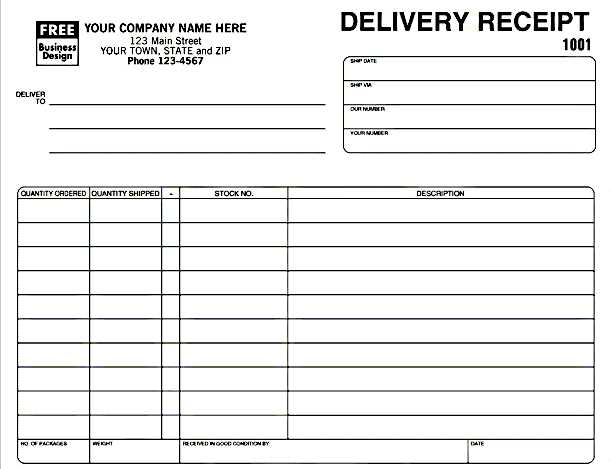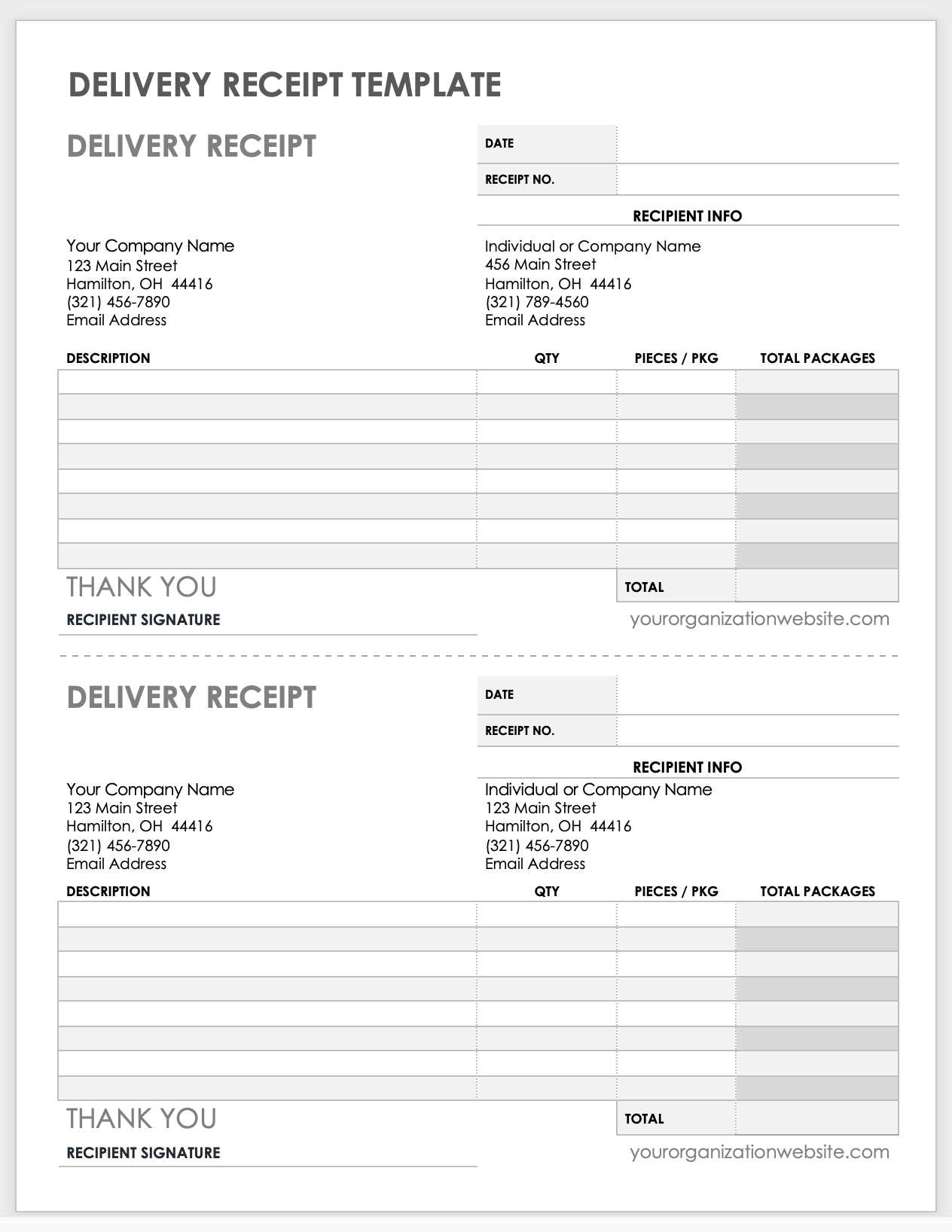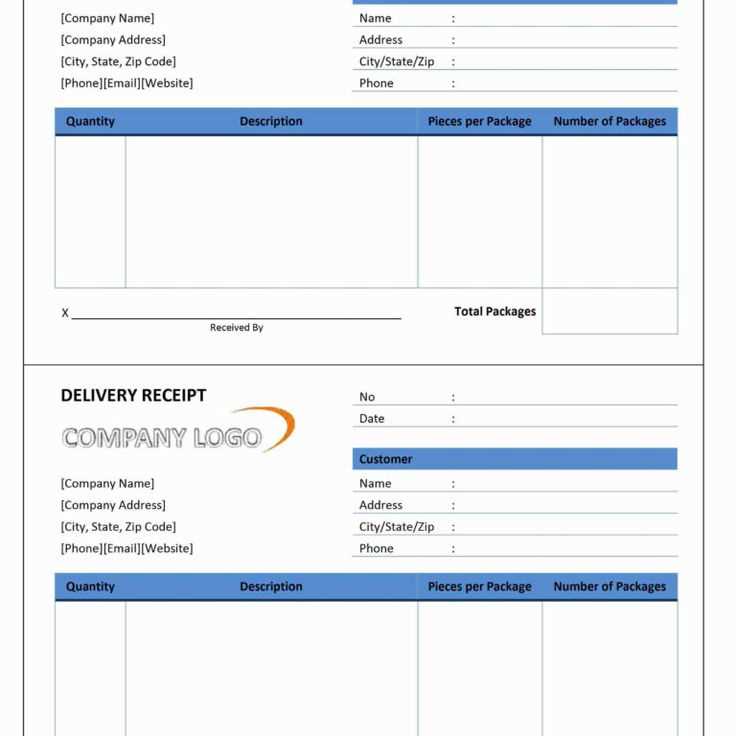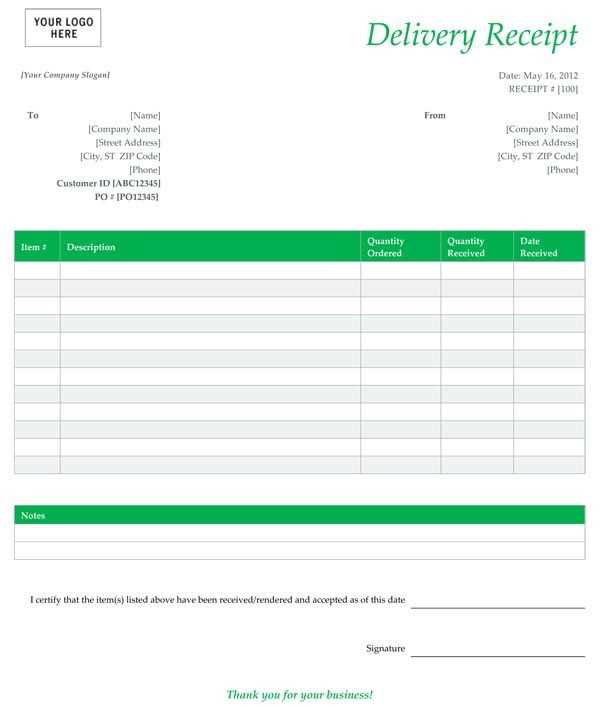
A well-structured cargo delivery receipt simplifies record-keeping and minimizes disputes. The document should include shipment details, recipient information, itemized contents, and confirmation of receipt. Standardizing this template ensures accuracy and compliance with logistics requirements.
Include the sender’s and receiver’s names, addresses, and contact details. A unique tracking number helps link the receipt to a specific shipment. The date and time of delivery provide essential verification in case of claims or discrepancies.
An itemized list should specify quantity, description, and condition of the goods upon arrival. If applicable, note any damages or missing items. The recipient’s signature confirms acceptance and serves as proof of delivery.
For added security, a section for remarks allows the receiver to document any concerns. Digital versions of receipts enhance traceability, offering instant access and reducing paperwork. A clear and concise template improves logistics efficiency and accountability.
Cargo Delivery Receipt Template
A well-structured cargo delivery receipt ensures accurate record-keeping and prevents disputes. Include the sender’s and recipient’s details, delivery date, and itemized list of goods with descriptions, quantities, and condition notes.
Assign a unique receipt number for easy tracking. Add a section for signatures to confirm receipt and condition at delivery. If applicable, include a field for special instructions or discrepancies noted upon arrival.
Use clear, concise language to avoid misinterpretation. Digital formats with automated numbering and time stamps improve efficiency and reduce errors. A standardized template streamlines documentation and supports compliance with shipping regulations.
Key Elements to Include in a Cargo Receipt
Include the sender’s and recipient’s full names, addresses, and contact details to ensure accurate delivery and accountability. Missing or incorrect information can cause delays and complications.
Shipment Details
Specify the cargo description, quantity, weight, and dimensions. Listing these details prevents disputes and helps verify that the correct items were shipped and received.
Tracking and Confirmation
Assign a unique tracking number and include the date and time of dispatch. Add the recipient’s signature field to confirm successful delivery, reducing liability risks.
Formatting and Layout Best Practices
Use a clear and structured table to present delivery details. Align columns properly and maintain consistent spacing to ensure readability.
| Field | Details |
|---|---|
| Tracking Number | Display in bold for quick identification. |
| Sender & Receiver | Include full names, addresses, and contact information. |
| Item Description | List product name, quantity, and weight. |
| Delivery Date | Format as YYYY-MM-DD to avoid confusion. |
| Signature Fields | Leave ample space for both parties to sign. |
Ensure uniform font size and type throughout the document. Use bold text for key information and avoid excessive capitalization. Keep margins wide enough to prevent text from running into edges when printed.
Arrange elements logically, placing critical details at the top. Use consistent alignment for numbers, dates, and labels. When adding notes, position them at the bottom to avoid cluttering essential data.
Legal and Compliance Considerations
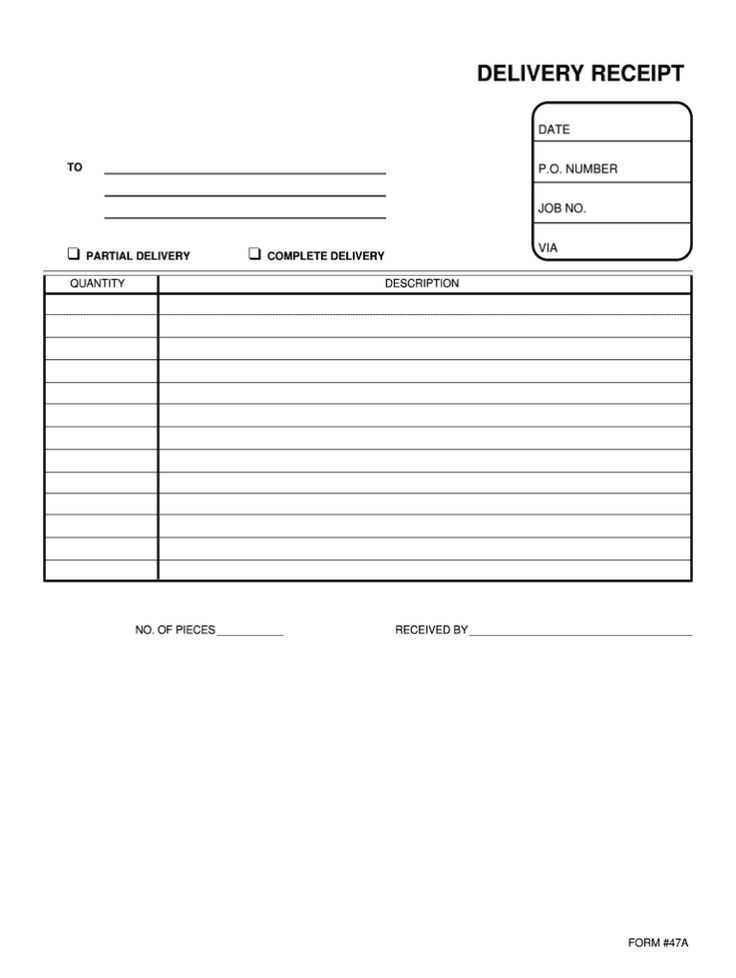
Ensure that every cargo delivery receipt includes all legally required details, such as sender and recipient information, item descriptions, weight, declared value, and applicable taxes or duties. Missing key elements can invalidate the document in case of disputes.
Mandatory Documentation
- Consignment details: Clearly state the origin, destination, and tracking references.
- Signatures: Both sender and recipient must sign to confirm the transfer of responsibility.
- Insurance coverage: Specify whether the shipment is insured and under what conditions claims can be made.
- Customs declarations: If crossing borders, include tariff classifications and import/export compliance statements.
Liability and Dispute Resolution
Define the liability limits in case of loss or damage. Referencing governing laws or industry standards can help prevent legal complications. In case of disputes, outline the steps for filing claims, required supporting documents, and response time expectations.
Regularly update receipt templates to reflect changes in regulations. Consulting a legal expert can prevent costly compliance errors.
Customizing for Different Shipping Methods
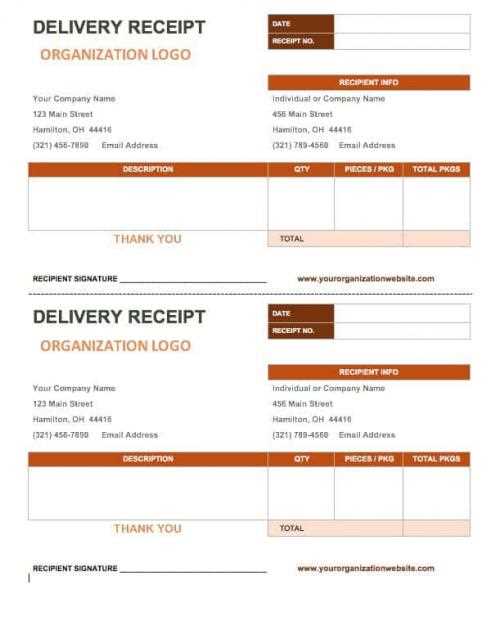
Adjust your cargo delivery receipt template according to the specific shipping method you are using. Each method has unique requirements that impact the details included in the receipt.
Air Freight
For air freight, include the flight number, airline, and airport of departure and destination. Add the estimated delivery time and any specific customs or security requirements for air shipments. Clearly state whether the shipment is express or standard.
Sea Freight
For sea freight, focus on vessel details such as the ship name, container number, and port of loading and unloading. Mention the estimated arrival date, along with any special instructions for handling the cargo in port. Ensure the weight and volume are accurately reflected, especially for large shipments.
Customizing your cargo delivery receipt ensures smoother operations and better communication with clients, tailored to the nuances of each shipping method. Adjusting the format for each method allows for more transparency and reduces the risk of errors in transit.
Common Errors and How to Avoid Them
Ensure all fields are accurately filled out. Mistakes in cargo details can lead to delivery issues or delays.
1. Missing or Incorrect Addresses
Always double-check delivery addresses before finalizing the receipt. A wrong address can lead to shipment failure or returns.
- Confirm street names, numbers, and zip codes.
- Verify the recipient’s contact information.
2. Incorrect Item Descriptions
Provide clear and precise descriptions for each item. Vague or incorrect item details can result in wrong deliveries or even legal issues.
- Be specific about size, weight, and content.
- Include any special handling instructions if needed.
3. Missing Signatures
Make sure to get a clear signature from the recipient. This serves as proof of delivery and avoids disputes.
- Request signatures from authorized recipients only.
- Ensure that all relevant parties are present at delivery.
4. Lack of Tracking Information
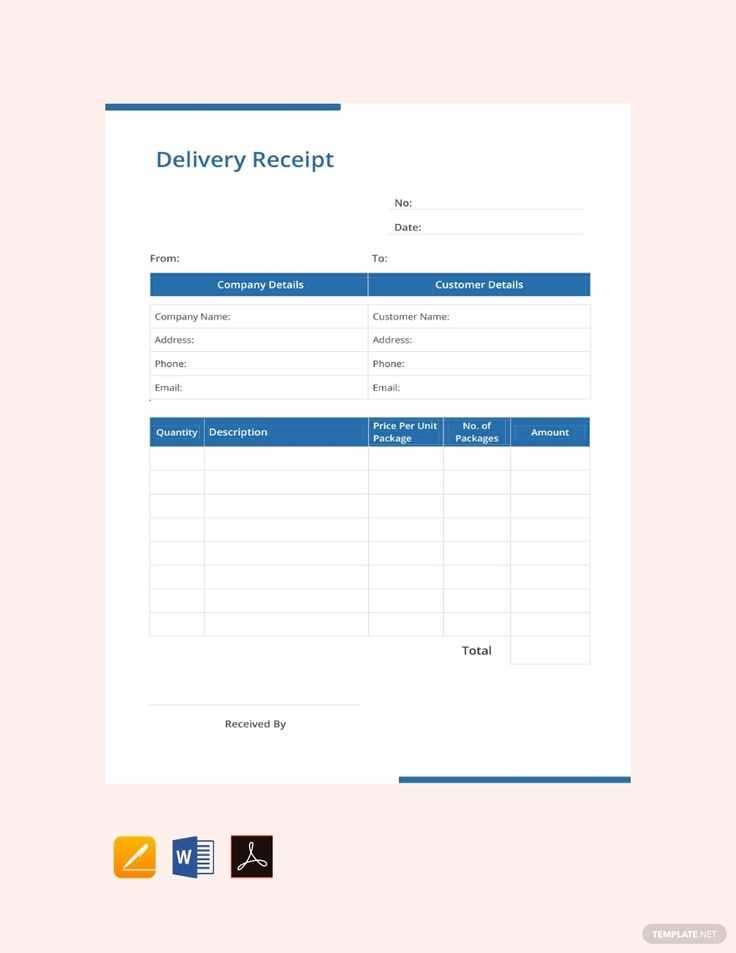
Provide clear tracking details for easy monitoring. Not having tracking info can frustrate the recipient and complicate the delivery process.
- Include the tracking number and its expected arrival date.
- Ensure tracking updates are available in real time.
Digital vs. Paper-Based Receipt Templates
Digital receipt templates offer flexibility and convenience, making them easy to store and share. With cloud storage options, you can access them from multiple devices without worrying about physical copies. Paper-based receipts, on the other hand, can be more tangible and trusted by those who prefer physical records. However, they take up space and can be easily lost or damaged over time.
When considering a digital template, look for compatibility with various file formats like PDF or Word. These formats allow for easy customization and editing, making updates quicker. Digital receipts can also be automatically generated and emailed to customers, saving time and reducing errors. Paper-based templates often require manual filling out and can lead to inaccuracies or delays in processing.
Digital receipts can integrate with accounting software, streamlining financial tracking. They also reduce the need for printing and paper usage, contributing to environmental sustainability. Paper receipts, while more familiar to some, can contribute to waste and clutter, especially when stored in bulk.
Choosing between digital and paper templates depends on your specific needs. If speed and accessibility are key, a digital format might be the best choice. For traditional use or legal requirements that call for physical records, paper receipts still have their place. Regardless of the method, ensure that the template is clear, well-organized, and easy to understand for all parties involved.
